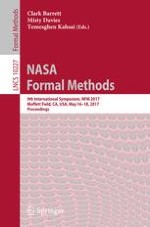2017 | OriginalPaper | Buchkapitel
Compositional Falsification of Cyber-Physical Systems with Machine Learning Components
verfasst von : Tommaso Dreossi, Alexandre Donzé, Sanjit A. Seshia
Erschienen in: NASA Formal Methods
Aktivieren Sie unsere intelligente Suche, um passende Fachinhalte oder Patente zu finden.
Wählen Sie Textabschnitte aus um mit Künstlicher Intelligenz passenden Patente zu finden. powered by
Markieren Sie Textabschnitte, um KI-gestützt weitere passende Inhalte zu finden. powered by
